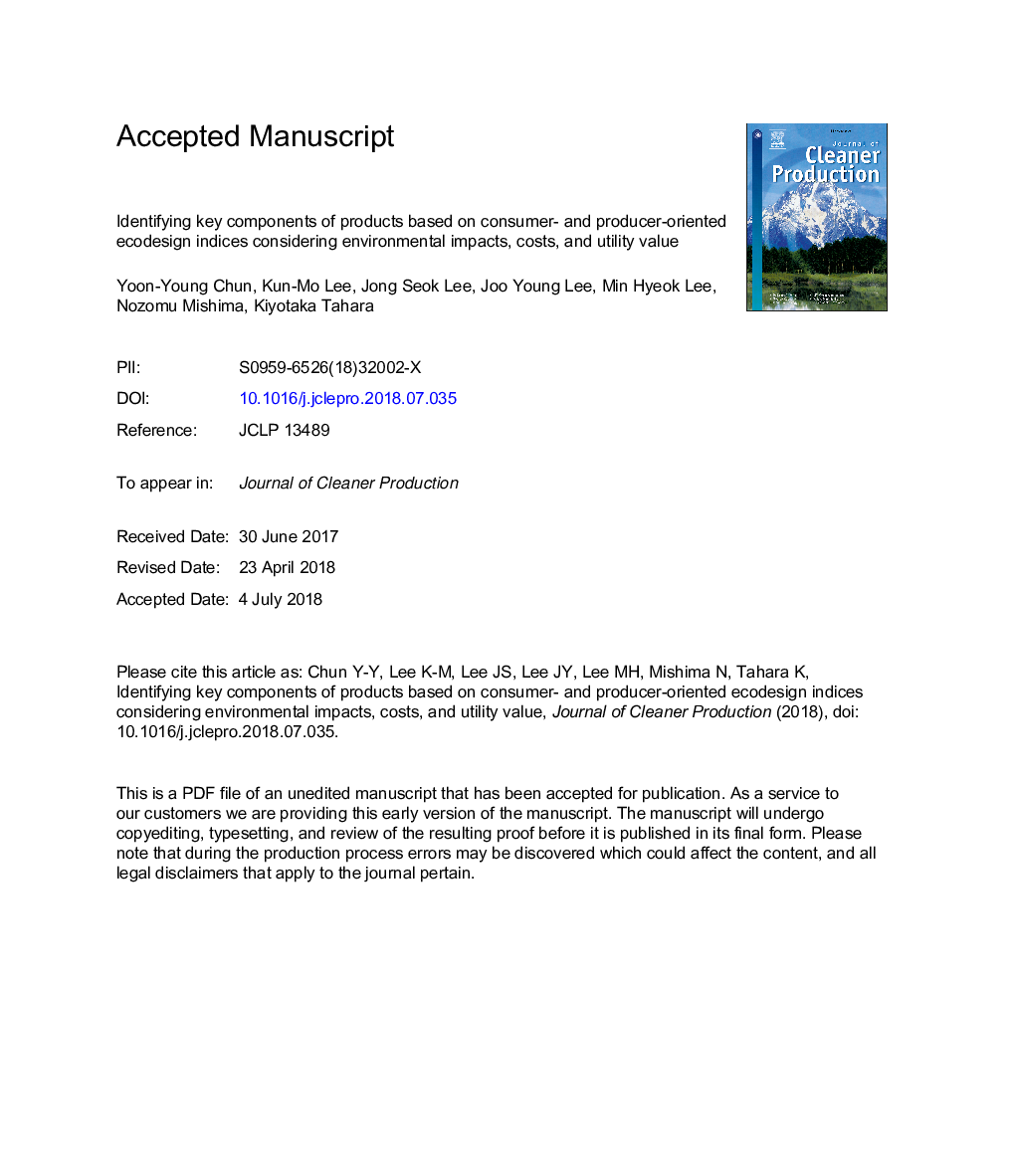| Article ID | Journal | Published Year | Pages | File Type |
|---|---|---|---|---|
| 8093657 | Journal of Cleaner Production | 2018 | 35 Pages |
Abstract
This study set out to address the challenges on the tool related barriers that limit ecodesign implementation. The challenges are allowance of multi-objective analysis, inclusion of life cycle perspective, and linkage with economic aspects. This was achieved by proposing a consumer-oriented ecodesign index (CEDI) and a producer-oriented ecodesign index (PEDI) as a method to identify the target components of a product for ecodesign, using the water purifier case study. These indices consider factors including environmental impact, utility value, and life cycle cost of a product. From the life cycle perspective, costs, and environmental impacts of the water purifier and its components were converted into a monetary value. Product utility values were calculated based on the total performance index method. To quantify the utility value of the water purifier, consumer preference for each function, and the decrease in the value of the functional performance of the product, were investigated. The compressor and hot water tank assemblies were two key components for ecodesign, each having relatively high potential environmental risks for the manufacturer of the water purifier. From the consumer's perspective, filters related to removing VOCs, heavy metals, and odor need to be redesigned to meet consumer expectation on product quality. The proposed indices can be further used as an evaluation tool for design alternatives for ecodesign.
Related Topics
Physical Sciences and Engineering
Energy
Renewable Energy, Sustainability and the Environment
Authors
Yoon-Young Chun, Kun-Mo Lee, Jong Seok Lee, Joo Young Lee, Min Hyeok Lee, Nozomu Mishima, Kiyotaka Tahara,
